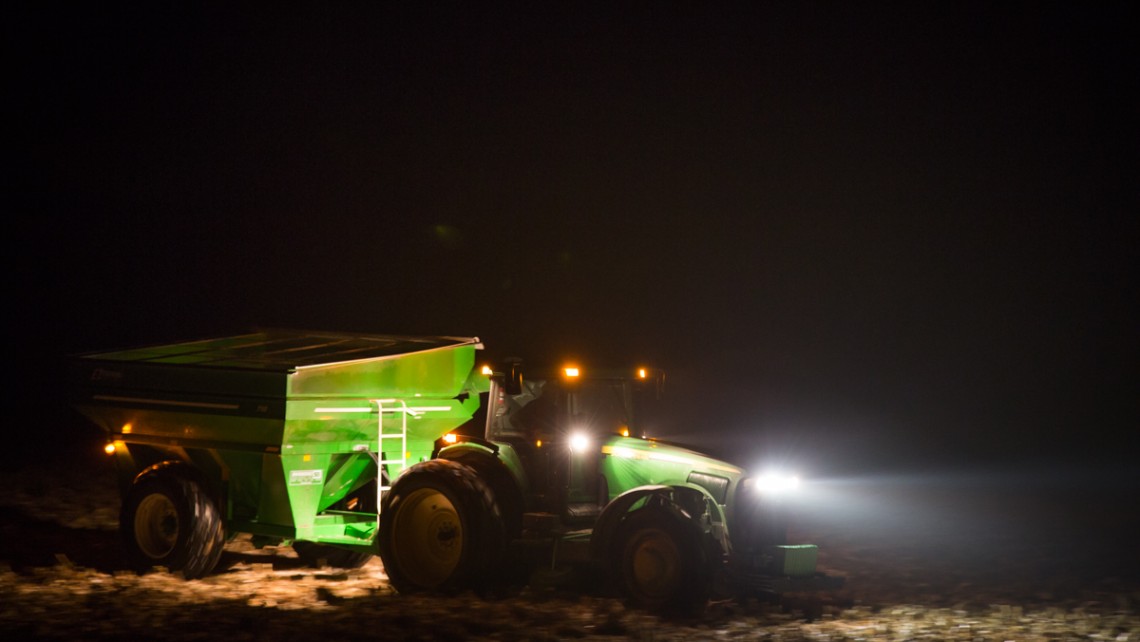
I have spent the last couple of weeks documenting the autumn harvest around west-central Wisconsin. Corn and soybeans have been the main crops that I have seen filling all of the farm fields that I have visited. A few farms I had the pleasure to join them in the fields and see the hard work they do up close and personal. The harvesting of soybeans is a very dusty process that fills the air with airborne particulates caused by separating the beans from the plants.
from wiki
Approximately 85% of the world’s soybean crop is processed into soybean meal and vegetable oil. Soybeans can be broadly classified as “vegetable” (garden) or field (oil) types. Vegetable types cook more easily, have a mild, nutty flavor, better texture, are larger in size, higher in protein, and lower in oil than field types. Tofu and soy milk producers prefer the higher protein cultivars bred from vegetable soybeans originally brought to the United States in the late 1930s. The “garden” cultivars are generally not suitable for mechanical combine harvesting because there is a tendency for the pods to shatter upon reaching maturity.
DAIRY/CROP/LIVESTOCK
Harvesting of corn is not nearly as dusty of a process but still kicks up quite a bit. The harvesting process of both plants are about the same in which the farmer makes multiple passes of a field until the combine is close to full. Once full, the combine will offload the bean or kernel into a truck or trailer located in the field. This process is repeated until the truck or trailer is fully loaded. When loaded, the truck will take the product to a onsite storage facility or to the nearest grain elevator to unload their product. Weather plays a big part of when the crop is ready to be harvested and during the harvest as wet weather can greatly delay the process.










































































Are You Ready?
